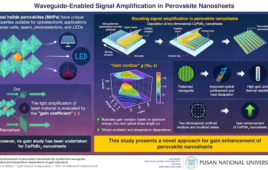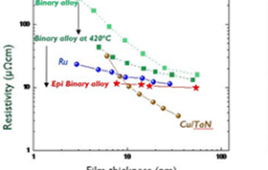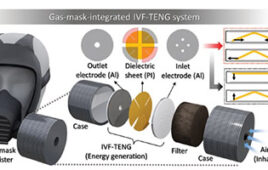
Researchers first developed a three-dimensional dynamic model of an interaction between light and nanoparticles. They used a supercomputer with graphic accelerators for calculations. Results showed that silicon particles exposed to short intense laser pulses lose their symmetry temporarily. Their optical properties become strongly heterogeneous. Such a change in properties depends on particle size, therefore it can be used for light control in ultrafast information processing nanoscale devices. The study is published in Advanced Optical Materials.
Improvement of computing devices today requires further acceleration of information processing. Nanophotonics is one of the disciplines that can solve this problem by means of optical devices. Although optical signals can be transmitted and processed much faster than electronic ones, first, it is necessary to learn how to quickly control light on a small scale. For this purpose, one could use metal particles. They localize light efficiently, yet weaken the signal eventually causing significant losses. However, dielectric and semiconducting materials, such as silicon, can be used instead of metal.
Silicon nanoparticles are now actively studied by researchers all around the world, including ITMO University. The long-term goal of such studies is to create an ultrafast compact modulators for optical signal. They can serve as a basis for computers of the future. However, this technology will become feasible only once we understand how nanoparticles interact with light.
“When a laser pulse hits the particle, a lot of free electrons are formed inside,” explains Sergey Makarov, head of the Laboratory of Hybrid Nanophotonics and Optoelectronics of ITMO University. “As a result a region saturated with oppositely charged particles is created. It is usually called an electron-hole plasma. Plasma changes optical properties of particles and up to now everybody believed that it happens with the whole particle simultaneously, so that the symmetry is preserved. We showed that this is not entirely true and an even distribution of the plasma inside particles is not the only possible scenario.”
Scientists found that an electromagnetic disturbance caused by interaction between light and particles has a more complex structure. This leads to a light distortion, varying with time. Therefore, the symmetry of particles breaks and optical properties become different throughout one particle. “Using analytical and numerical methods we first looked inside the particle and saw that processes taking place there are far more complicated than we thought,” says Konstantin Ladutenko, a member of the International Research Center of Nanophotonics and Metamaterials of ITMO University. “Moreover, we found that by changing the particle size, we can affect its interaction with the light signal. So, we might be able to predict the signal path in a entire system of nanoparticles.”
In order to create a tool to study processes inside nanoparticles, scientists from ITMO University joined forces with colleagues from Jean Monnet University in France. “We proposed analytical methods to determine particle size and refractive index, which might provide a change in optical properties. Afterwards, with powerful computational methods we tracked processes inside particles. Our colleagues did calculations on a computer with graphics accelerators. Such computers are often used for cryptocurrency mining. However, we decided to enrich humanity with new knowledge, rather than enrich ourselves. What is more, bitcoin rate just started to fall then,” adds Konstantin.
Devices based on such nanoparticles may become basic elements of optical computers, just as transistors now are basic elements of electronics. They will make it possible to distribute and redirect or branch the signal. “Such asymmetric structures have a variety of applications yet we focus on ultra-fast signal processing,” continues Sergey. “Now we have a powerful theoretical tool which will help us to develop a quick and compact light management system.”




